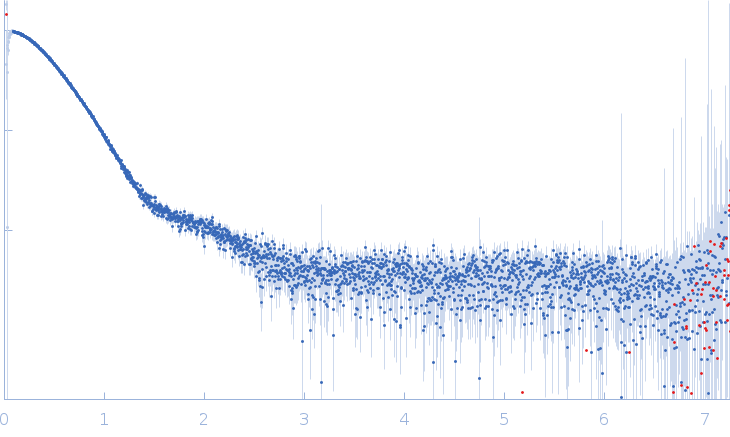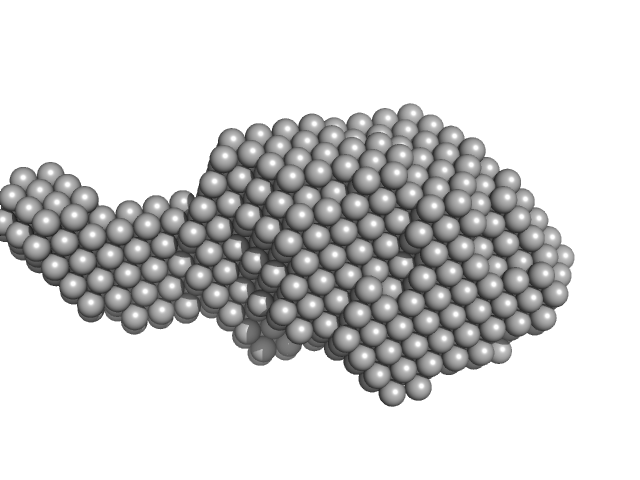|
Synchrotron SAXS data from solutions of Ubiquitin-specific protease 14 (USP14) in 20 mM HEPES, 150 mM NaCl, 2 mM TCEP, pH 7.5 were collected on the EMBL P12 beam line at PETRA III (DESY, Hamburg, Germany) using a Pilatus 6M detector at a sample-detector distance of 3 m and at a wavelength of λ = 0.124 nm (I(s) vs s, where s = 4πsinθ/λ, and 2θ is the scattering angle). In-line size-exclusion chromatography (SEC) SAS was employed. The SEC parameters were as follows: A 75.00 μl sample at 12 mg/ml was injected at a 0.60 ml/min flow rate onto a GE Superdex 75 Increase 10/300 column at 20°C. 2400 successive 1 second frames were collected. The data were normalized to the intensity of the transmitted beam and radially averaged; the scattering of the solvent-blank was subtracted.
SEC-SAXS measurements on full-length USP14. The experimental molecular weight was determined from SEC-MALLS run in parallel to SEC-SAXS. Structural sampling of the two domains of UPS14, and the generation of a refined ensemble of structural states that fit the SAXS data (displayed, bottom) were calculated using the iterative Bayesian/Maximum Entropy approach (iBME) as described in Pesce F, Lindorff-Larsen K (2021) Refining conformational ensembles of flexible proteins against small-angle x-ray scattering data. Biophys J 120:5124–5135. The results from iBME are included in the full entry zip archive.
|
|
 s, nm-1
s, nm-1
![Static model image Ubiquitin carboxyl-terminal hydrolase 14 OTHER [STATIC IMAGE] model](/media//pdb_file/SASDQZ7_fit2_model1.png)
